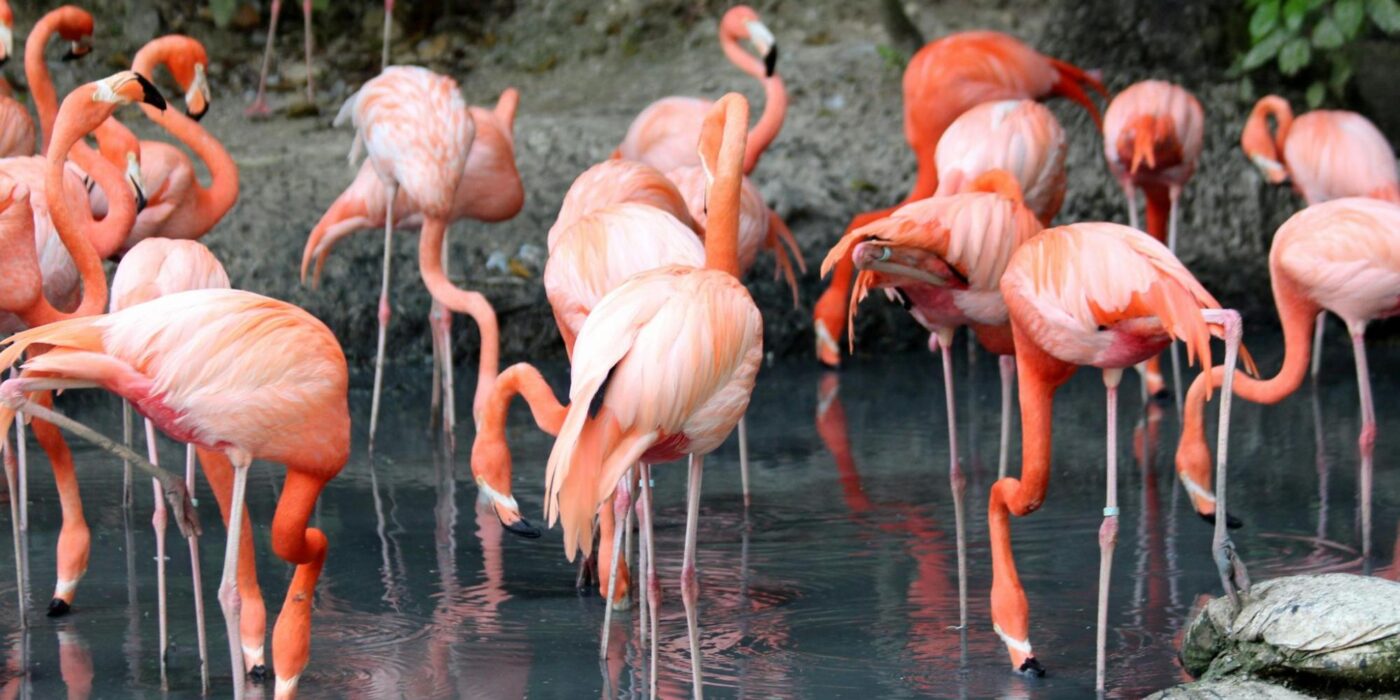
Spotting Flamingos in Tanzania: Best Viewing Tips
.elementor-widget-text-editor.elementor-drop-cap-view-stacked .elementor-drop-cap{background-color:#69727d;color:#fff}.elementor-widget-text-editor.elementor-drop-cap-view-framed .elementor-drop-cap{color:#69727d;border:3px solid;background-color:transparent}.elementor-widget-text-editor:not(.elementor-drop-cap-view-default) .elementor-drop-cap{margin-top:8px}.elementor-widget-text-editor:not(.elementor-drop-cap-view-default) .elementor-drop-cap-letter{width:1em;height:1em}.elementor-widget-text-editor .elementor-drop-cap{float:left;text-align:center;line-height:1;font-size:50px}.elementor-widget-text-editor .elementor-drop-cap-letter{display:inline-block}
Among Tanzania’s many natural wonders, flamingos stand out as some of the most fascinating and beautiful birds to observe. The country hosts large populations of both Greater and Lesser Flamingos, which can be found in its alkaline lakes and soda lakes. These elegant birds are known for their striking pink feathers and graceful movements. Flamingos play a crucial role in the ecosystem, contributing to the health of their habitats by feeding on algae and small invertebrates.
For those eager to witness the mesmerizing sight of flamingos in their natural habitat, it is essential to be well-prepared. Knowing the best locations and times to spot these birds can greatly enhance your experience. Additionally, being aware of proper viewing etiquette ensures that you can enjoy the spectacle while minimizing disturbance to the wildlife. This blog will provide you with all the necessary information for a memorable and responsible flamingo-spotting adventure in Tanzania.
.elementor-heading-title{padding:0;margin:0;line-height:1}.elementor-widget-heading .elementor-heading-title[class*=elementor-size-]>a{color:inherit;font-size:inherit;line-height:inherit}.elementor-widget-heading .elementor-heading-title.elementor-size-small{font-size:15px}.elementor-widget-heading .elementor-heading-title.elementor-size-medium{font-size:19px}.elementor-widget-heading .elementor-heading-title.elementor-size-large{font-size:29px}.elementor-widget-heading .elementor-heading-title.elementor-size-xl{font-size:39px}.elementor-widget-heading .elementor-heading-title.elementor-size-xxl{font-size:59px}
The Beauty of Tanzania’s Flamingos
Tanzania is home to two main species of flamingos: the Greater Flamingo and the Lesser Flamingo. These species can be found in large numbers in the country’s soda lakes, creating breathtaking scenes that attract bird watchers and nature enthusiasts from around the world.
Greater Flamingo
The Greater Flamingo (Phoenicopterus roseus) is the largest species of flamingo, known for its pale pink plumage, long legs, and distinctive downward-bending beak. These birds are mostly found in Lake Manyara National Park and the Momella lakes in Arusha National Park. Greater Flamingos feed primarily on invertebrates, small fish, and algae, which they filter from the water using their specialized beaks.
Lesser Flamingo
The Lesser Flamingo (Phoeniconaias minor) is smaller in size compared to the Greater Flamingo but often more vividly colored, with a deeper pink hue. These flamingos are primarily found in soda lakes such as Lake Magadi in the Ngorongoro Crater and Lake Natron, which serves as one of their most significant breeding grounds. Lesser Flamingos have a diet that consists mainly of blue-green algae (cyanobacteria), which they filter from the water using their highly specialized beaks.
Flamingo Behavior and Migration Patterns
Flamingos in Tanzania exhibit fascinating behaviors and migration patterns. Both Greater and Lesser Flamingos are known for their large, gregarious flocks, which can number in the thousands. These birds are social creatures, engaging in synchronized displays and movements that are both captivating and complex.
Migration plays a critical role in their lifecycle. Flamingos migrate in response to changing water levels and food availability, often traveling between different lakes within East Africa. For instance, the Lesser Flamingos migrate between lakes in Tanzania and Kenya, such as Lake Nakuru and Lake Bogoria. Their breeding is closely tied to the conditions of these lakes, with breeding colonies forming during specific times when the water levels and food sources are optimal.
Best Locations to Spot Flamingos in Tanzania
Spotting flamingos depends on the season and location. Below are the top places to check on your next trip:
1. Lake Manyara
Lake Manyara is a shallow, alkaline lake that attracts a significant number of flamingos, particularly during the wet season. Visitors can witness large flocks of both Greater and Lesser Flamingos feeding along the lake’s shores, creating a vibrant pink spectacle.
Aside from flamingos, Lake Manyara National Park is also home to lions, elephants, hippos, and over 400 species of birds, making it a paradise for wildlife enthusiasts. The best time to visit Lake Manyara National Park for flamingo viewing is during the wet season, which typically runs from March to May. During this period, the water levels in the lake are high, and the abundance of food attracts large flocks of flamingos.
2. Lake Natron
Lake Natron, situated in northern Tanzania near the Kenyan border, is one of the most important breeding grounds for Lesser Flamingos. This soda lake is highly alkaline, with water temperatures that can reach up to 60 degrees Celsius, making it inhospitable to most wildlife. However, these harsh conditions create a perfect environment for the cyanobacteria that form the primary diet of Lesser Flamingos.
The lake’s unique features include its striking red and pink hues, caused by the microorganisms in the water, and the surreal landscapes formed by salt flats and volcanic activity. Lake Natron is a crucial sanctuary for flamingos, with millions of them gathering here to breed. Spotting flamingos in this area is best during the dry season. During this time, the water levels are lower, and the flamingos congregate in large numbers to breed.
3. Lake Magadi/Ngorongoro Crater
The Ngorongoro Crater is renowned for its incredible wildlife diversity, including the presence of flamingos in the alkaline Lake Magadi, situated within the crater. Visitors to the Ngorongoro Crater can enjoy breathtaking views of the flamingos set against the backdrop of the crater walls. The best time to visit the Ngorongoro Crater for flamingo viewing is during the wet season, from November to June, when the water levels in Lake Magadi are higher, attracting more flamingos.
4. Lake Eyasi
Lake Eyasi, a shallow, seasonal lake located in the Great Rift Valley, is another notable location for flamingo spotting in Tanzania. The lake’s alkaline waters attract both Greater and Lesser Flamingos, particularly during the wet season. Lake Eyasi is also home to the Hadzabe and Datoga tribes, offering visitors a unique cultural experience alongside wildlife viewing.
5. Lake Ndutu
Situated on the southern edge of the Serengeti National Park, Lake Ndutu is renowned for its spectacular flamingo migration. This small soda lake lies within the Ngorongoro Conservation Area. From June to November, large flocks of both Greater and Lesser Flamingos can be observed along its shores.
Additionally, the Ndutu Plains, where Lake Ndutu is located, play a crucial role in the breeding and calving of wildebeests, which occurs annually from December to February. This unique convergence of flamingo migrations and wildebeest activities makes Lake Ndutu a prime destination for wildlife enthusiasts.
6. Momella Lakes
Located in Arusha National Park, the Momella Lakes comprise seven shallow alkaline lakes, including Big Momella and Small Momella. During the wet season, these lakes draw thousands of Lesser and Greater Flamingos to their shores. Small Momella Lake, being the shallowest, often has the highest concentration of flamingos, creating a stunning spectacle for visitors.
Additionally, the alkaline waters of the Momella Lakes provide an ideal habitat for flamingo breeding. Visitors may witness nesting behaviors and see flamingo chicks during the breeding season.
7. Empakaai Crater
Crater lakes are excellent habitats for flamingos in Tanzania, and Empakaai Crater is one example. Located 300 meters deep inside the Empakaai Crater, Empakaai Lake’s soda ash-crusted shores attract a significant number of flamingos. These birds typically migrate to Empakaai Lake in search of algae after Lake Makat or Lake Magadi begin to dry up.
With a depth of 85 meters, Empakaai Lake provides a suitable environment for flamingos to thrive. Empakaai Crater is part of the larger Ngorongoro Conservation Area. Although it is smaller than the famous Ngorongoro Crater, Empakaai is equally stunning. To access the flamingo-filled lake, visitors must hike down the volcanic caldera, offering an adventurous and rewarding experience.
Best Time to Spot Flamingos
Flamingos in Tanzania are migratory birds that move between various alkaline lakes in response to changing water levels and food availability. Seasonal patterns heavily influence their presence:
- Wet Season (March to May): During this period, heavy rains fill the lakes, creating ideal conditions for flamingos to feed on algae and small invertebrates. This is when flamingos are most abundant.
- Dry Season (June to October): As water levels recede, some lakes become too shallow or too salty for flamingos, causing them to migrate to other suitable habitats. However, certain locations like Momella lakes still host significant flamingo populations during this time.
Visit Tanzania and Experience Flamingo Spotting
Tanzania is a land of unparalleled natural beauty and biodiversity, offering unforgettable experiences for nature lovers and adventure seekers alike. Among its many wonders, the sight of thousands of flamingos gathered around shimmering alkaline lakes is a spectacle that should not be missed.
The vibrant pink hues of these elegant birds create a breathtaking contrast against the backdrop of Tanzania’s stunning landscapes. Whether you are an avid birdwatcher, a passionate photographer, or simply someone who appreciates the wonders of nature, flamingo spotting in Tanzania promises to be an enriching and awe-inspiring experience.
The post Spotting Flamingos in Tanzania: Best Viewing Tips appeared first on Luxury Tanzania Safaris | Sababu Safaris.



